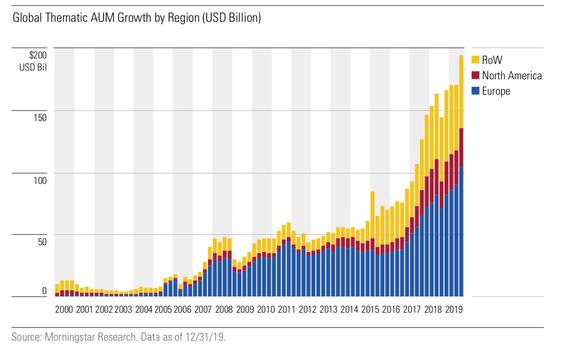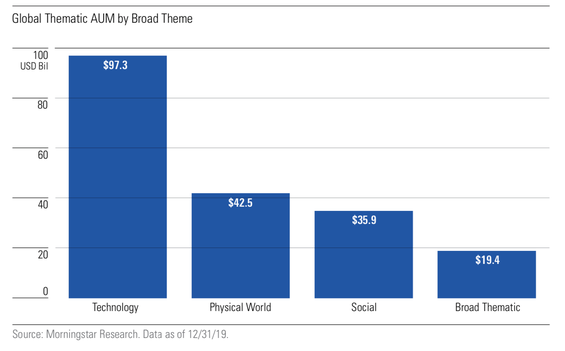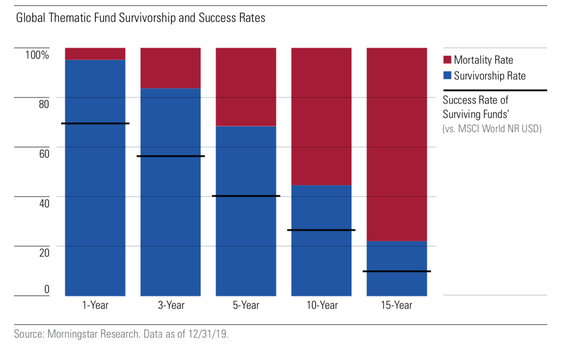The global menu of thematic funds has ballooned in recent years as a growing number of funds attempt to harness secular growth themes, which can include everything from artificial intelligence to cannabis. This steady supply of niche and often gimmicky funds from asset managers has increased demand from investors for clarity and guidance.
To help meet this demand, we have developed a novel taxonomy for classifying these funds. Using this framework, we can analyze key trends in the market for thematic funds and help investors better navigate this landscape.
Here are three key takeaways from our recent study, which provides an overview of the global market for thematic funds.
1. Assets in thematic funds have nearly tripled, and the menu is mushrooming
Investor interest in thematic funds is growing. Over the three years ended Dec. 31, 2019, collective assets under management in thematic funds grew nearly threefold, from $75 billion to approximately $195 billion worldwide. This surge is shown in the chart below. 
The menu of thematic funds has also swelled. A total of 154 new thematic funds debuted globally in 2019, falling just short of the record 169 new funds launched in this universe in 2018. As of the end of December 2019, Morningstar’s global database was tracking a total of 923 thematic funds.
2. Thematic funds’ flows have been focused on a few themes
With $97 billion in assets as of the end of 2019, funds falling under the Technology Broad Theme in our taxonomy account for the majority of global thematic fund assets. The full distribution of assets across Broad Themes is shown in the chart below. 
This is just one of many examples of investors’ performance-chasing tendencies in the thematic fund space. The most prominent example was the rise and fall of Internet funds that coincided with the late ‘90s tech bubble.
3. The odds are stacked against investors in thematic funds, but the prospective payouts are big
Investors in thematic funds are making a trifecta bet. They are betting that they will:
- pick a winning theme,
- select a fund that is well-placed to harness that theme, and
- see valuations that indicate that the market hasn’t already priced-in the theme’s potential.
The odds of winning these bets are low, but the prospective payouts can be large.
The long-term performance figures for thematic funds are pretty unflattering. As the chart below shows, just 45% of all thematic funds launched prior to 2010 survived to 2020. Only a fourth managed to both survive and outperform the MSCI World Index over that 10-year span.



